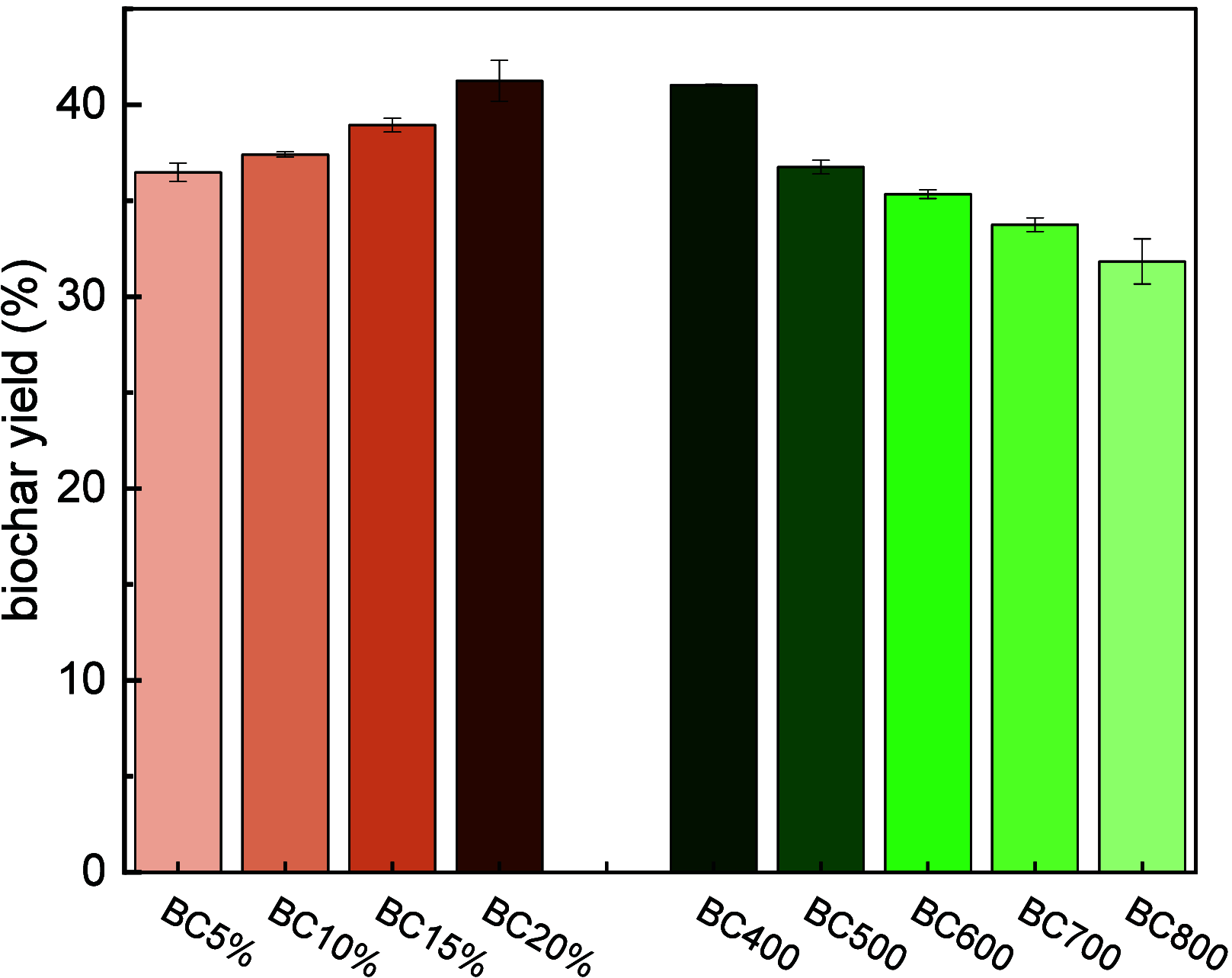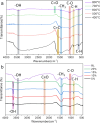Stabilization Mechanism of Highly Toxic Hexavalent Chromium during Carbothermal Reactions in Lettuce
- PMID: 40584368
- PMCID: PMC12199087
- DOI: 10.1021/acsomega.5c00705
Stabilization Mechanism of Highly Toxic Hexavalent Chromium during Carbothermal Reactions in Lettuce
Abstract
As a remediation plant for remediating cadmium-contaminated soil, highly toxic Cr-(VI) is enriched in lettuce, making the rational treatment of this biomass a challenge to be solved. In this work, CaO, which is cheap and available, was used as a stabilizer for the pyrolysis of polluted lettuce. Results revealed that the Cr-(VI):Cr ratio in lettuce-derived biochar obtained at 800 °C decreased by 93.6% in comparison to that at 400 °C due to the immobilization effects. Spearman correlation analysis also revealed that Cr-(VI) was negatively correlated with CaO dosage (R 2 = -0.81, p ≤ 0.01) and pyrolysis temperature (R 2 = -0.86, p ≤ 0.01). Furthermore, Cr-(VI) was reduced to Cr-(V) and Cr-(III) in the presence of CaO during the pyrolysis. XRD analysis and SEM-EDS analysis further confirmed that the Cr-(V) compound refers to Ca5(CrO4)3OH as well as Ca5(CrO4)3Cl. The intensity of the peak of the aromatic ring and heteroaromatic compounds on the surface of biochar presents a significant increase when the CaO dosage was higher than 10%. Furthermore, these redox-active functional groups act as electron donors in the reduction of Cr-(VI). Meanwhile, Cr-(VI) was partially converted preferentially to Ca2CrO4Cl in the copresence of CaO and Fe2O3, resulting in the immobilization of Cr-(VI). This study clarifies the influence of CaO dosage and temperature on the Cr-(VI) transformation and characteristic of biochar and provides a new strategy for Cr-(VI) remediation of the Cr-contaminated biomass.
© 2025 The Authors. Published by American Chemical Society.
Figures









Similar articles
-
Assessment of biochar filter application in improving chromium stress tolerance and plant physiology in Chinese cabbage (Brassica rapa) under a flow-through water setup.BMC Biotechnol. 2025 Jul 19;25(1):74. doi: 10.1186/s12896-025-01010-3. BMC Biotechnol. 2025. PMID: 40684162 Free PMC article.
-
A systematic review on adsorptive removal of hexavalent chromium from aqueous solutions: Recent advances.Sci Total Environ. 2022 Feb 25;809:152055. doi: 10.1016/j.scitotenv.2021.152055. Epub 2021 Dec 4. Sci Total Environ. 2022. PMID: 34871684
-
Influencing Factors of Hexavalent Chromium Speciation Transformation in Soil from a Northern China Chromium Slag Site.Molecules. 2025 Jul 23;30(15):3076. doi: 10.3390/molecules30153076. Molecules. 2025. PMID: 40807251 Free PMC article.
-
Intravenous magnesium sulphate and sotalol for prevention of atrial fibrillation after coronary artery bypass surgery: a systematic review and economic evaluation.Health Technol Assess. 2008 Jun;12(28):iii-iv, ix-95. doi: 10.3310/hta12280. Health Technol Assess. 2008. PMID: 18547499
-
Interventions for the management of malignant pleural effusions: a network meta-analysis.Cochrane Database Syst Rev. 2016 May 8;2016(5):CD010529. doi: 10.1002/14651858.CD010529.pub2. Cochrane Database Syst Rev. 2016. Update in: Cochrane Database Syst Rev. 2020 Apr 21;4:CD010529. doi: 10.1002/14651858.CD010529.pub3. PMID: 27155783 Free PMC article. Updated.
References
-
- Zhang X., Yan M., Chen P., Li J., Li Y., Li H., Liu X., Chen Z., Yang H., Wang S., Wang J., Tang Z., Huang Q., Lei J., Hayat T., Liu Z., Mao L., Duan T., Wang X.. Emerging MOFs, COFs, and their derivatives for energy and environmental applications. Innovation. 2025;6(2):100778. doi: 10.1016/j.xinn.2024.100778. - DOI - PMC - PubMed
LinkOut - more resources
Full Text Sources
Research Materials
